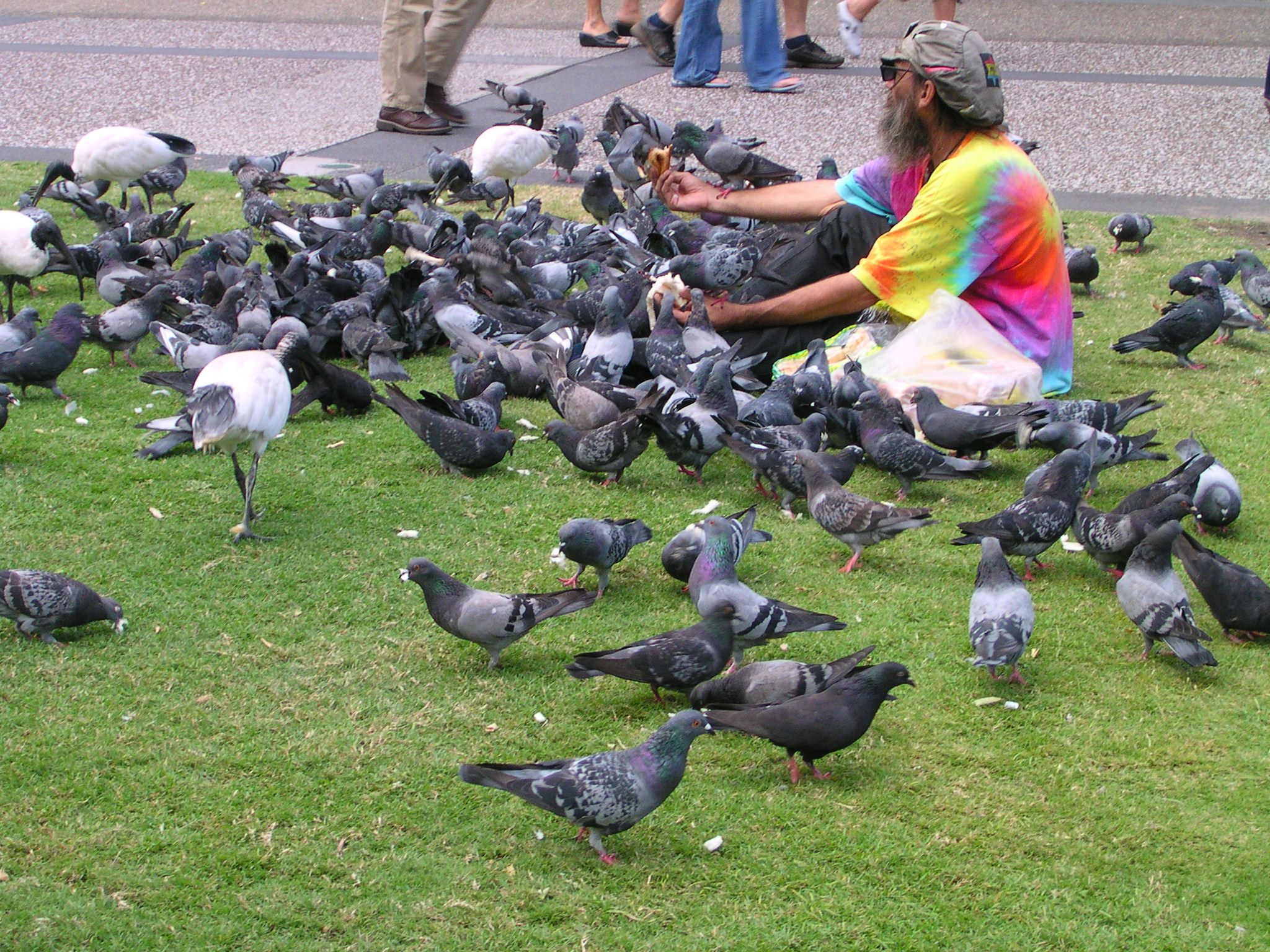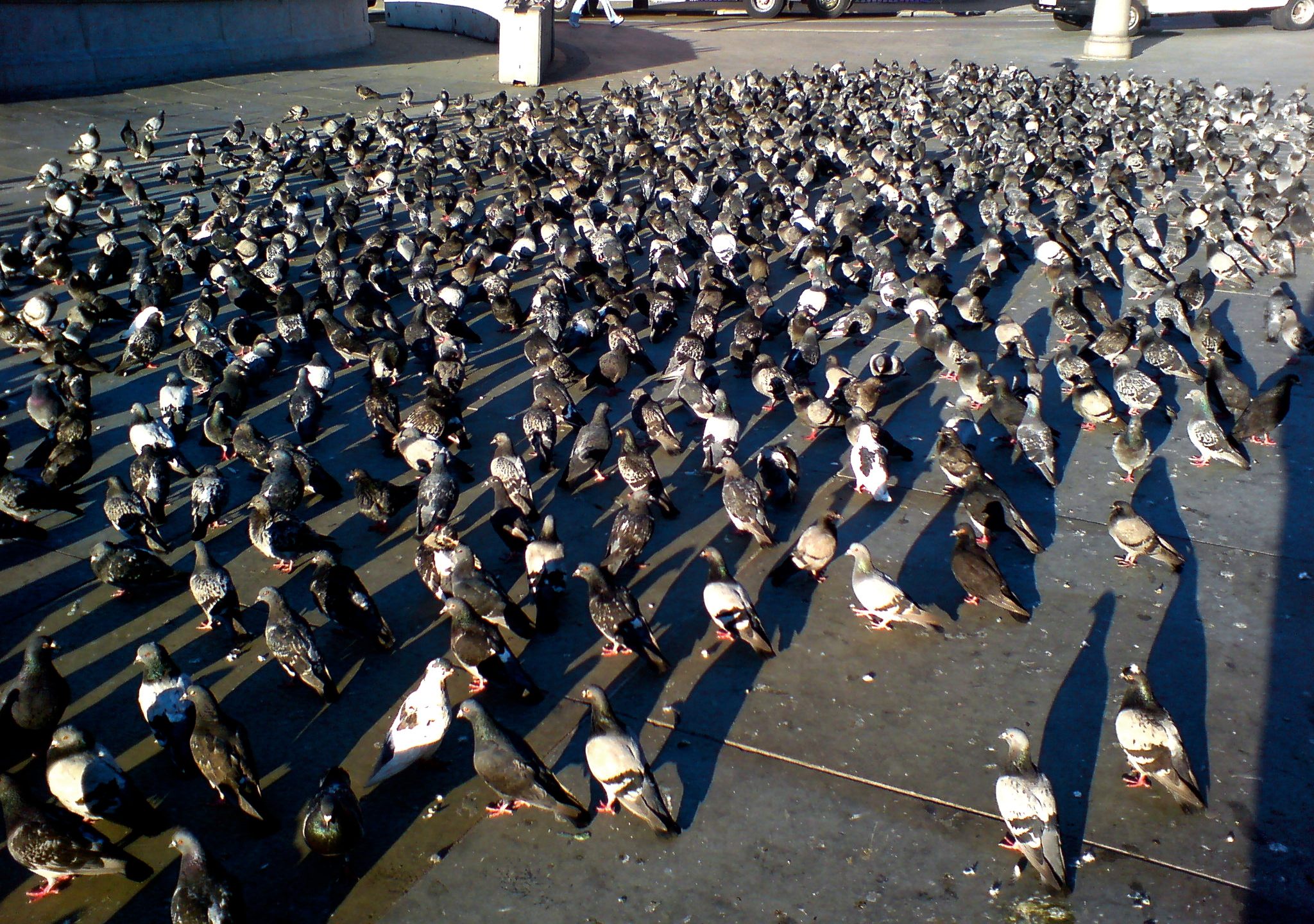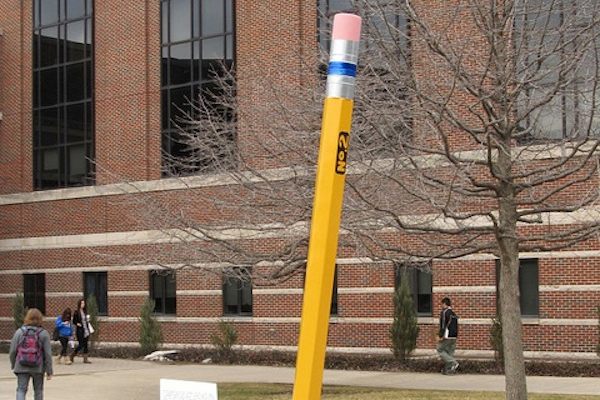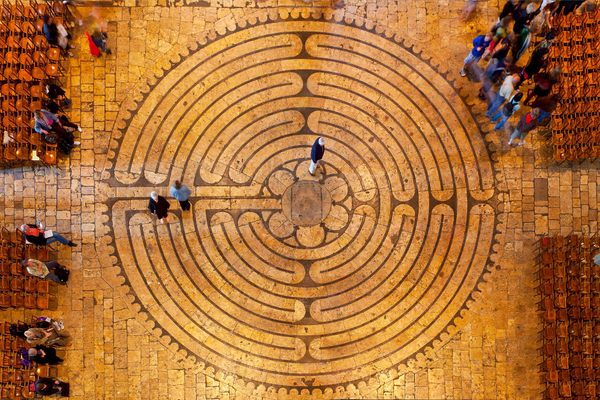A Harvard Stadium Pigeon Prank That Pavlov Would Be Proud Of

Pigeons: prepare to descend! (Photo: Harvard Sports Information Dept/WikiCommons CC BY-SA 3.0)
The annual Harvard-Yale football game happens on Saturday November 21, and along with it come everyone’s favorite stories about pranks of seasons past, from the mysterious MIT balloon of 1982 to the epic WE SUCK triumph of 2004.
Among the lesser-known practical jokes is the Pavlovian pigeon prank. The legend goes that an MIT student dressed in a black-and-white striped shirt went to the Harvard football stadium every day of one summer, blowing a whistle while scattering breadcrumbs or birdseed to coax neighborhood pigeons down onto the field. At Harvard’s opening game of the season, upon the referee’s first whistle, it’s said that hundreds of pigeons descended onto the field, causing a half-hour delay.
The prank has made its rounds on the rumor mill, generally accepted as historical fact, though no date is ever attached to its occurrence. A 2005 Yale Daily News article reported the prankster as a female student, while other accounts imply the miscreant was male. But there are no names, no witnesses, and no proof that the magnificent Pavlovian pigeon prank was ever actually pulled off. We set out to determine whether it happened, and when—an investigation that required consulting MIT’s “prank historian,” a few Harvard alums, and two pigeon experts boasting a combined 64 years of pigeon experience.

Perhaps this man is conditioning local pigeons for a personal prank. (Photo: brewbooks/flickr)
You can think of Debbie Douglas as the MIT Hack Historian—“hack” being the university’s term for a clever and benign prank or practical joke. Douglas is the Director of Collections and Curator of Science and Technology at the MIT Museum as well as the chief compiler of the second edition of Nightwork: A History of Hacks and Pranks at MIT. MIT has raised hacks to a kind of performance art, an unofficial pastime that brings the community together and often cultivates reverence from outside observers. “Good pacing, good humor, and not hurting anyone or anything—those are the keys to a good prank,” says Douglas. (“And also a good life,” she adds.)
Douglas was kind enough to poke around various sources and archives in an effort to track down this piece of pigeon lore; however, she was not able to find any factual basis for the hack. Snopes.com, “the definitive Internet reference source for urban legends, folklore, myths, rumors, and misinformation,” reports that the legend appears to be apocryphal. We asked a handful of Harvard alums whose graduation years ranged from 1972 to 2005. None have memories of such an incident (though one mentioned something about the last game of the season always being with birdbrains).
“To some extent it sounds too good to be true,” says Douglas. “But that doesn’t mean it didn’t happen somewhere, or somebody doesn’t wish it wouldn’t happen.”

Pigeons: assemble! (Photo: Andrew/flickr)
Dr. Aaron Blaisdell of the UCLA Department of Psychology has been studying pigeon behavior for 16 years. He learned about the MIT-Harvard prank when his Ph.D mentor told the anecdote in class back in the mid-’90s. “I don’t know if it was true or not, but he told it as if it were true,” says Blaisdell. “It’s very plausible.”
If someone were to have pulled this off, what would it have required? “I could see it easily, based on how quickly it takes to train a pigeon to go to a cue that signals food,” says Blaisdell. “In just a few weeks you can get the flock of pigeons to start reliably going to a cue like the whistle, especially if it’s the same time every day.” It’s just like the experiment Pavlov conducted with his dog, in which a cue (bell) incited a response (drool) in anticipation of the reward (food).

That’s a lot of very potent visual stimuli. Harness that pigeon potential! (Photo: Belinda Hankins Miller/WikiCommons CC BY 2.0)
While Pavlov used a bell, it turns out that pigeons are actually more responsive to visual than auditory stimuli, says Dr. Edward Wasserman, who has worked with pigeons for 45 years and is currently Professor of Experimental Psychology at the University of Iowa. This means that the referee jersey is a more important cue than the whistle, which pigeons might not even pick up on. Flying requires excellent eyesight, he explains, so pigeons are adept at differentiating between all kinds of visual stimuli—even human faces. “The whistle would be nothing, next to nothing,” he says. The outfit would be a much more salient stimulus, and the brighter the better. “They’ll be jumping on your head and shoulders after two or three days,” he says, laughing.
With the great MIT-Harvard pigeon stunt’s history unverified but its viability confirmed, there’s just one question left: What are pranksters waiting for?










Follow us on Twitter to get the latest on the world's hidden wonders.
Like us on Facebook to get the latest on the world's hidden wonders.
Follow us on Twitter Like us on Facebook